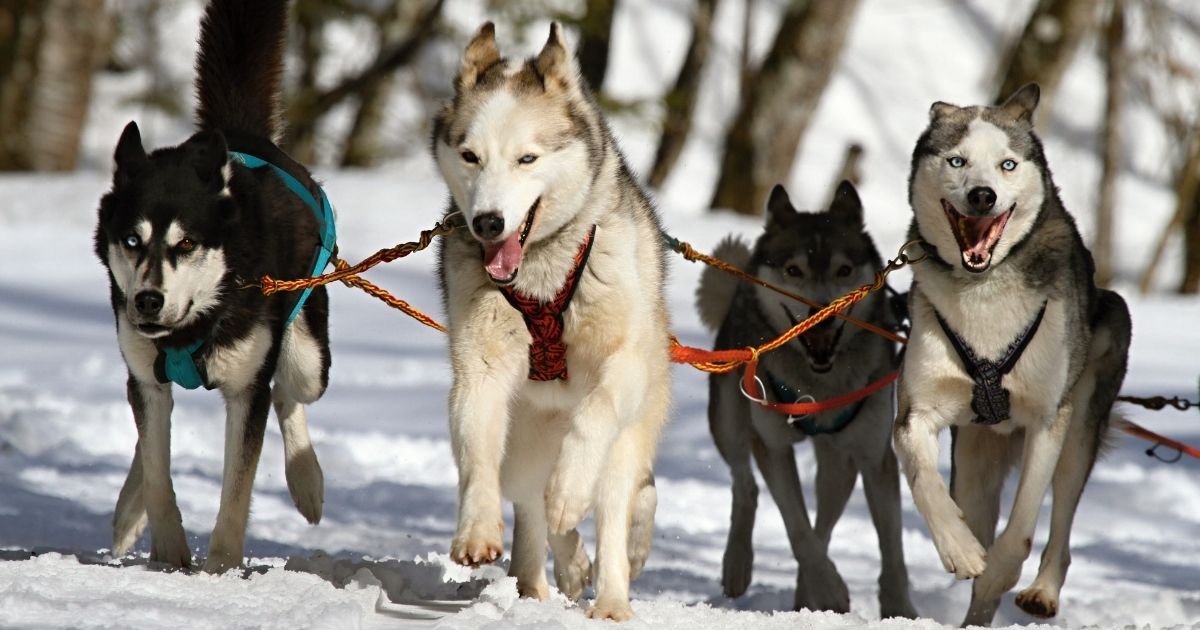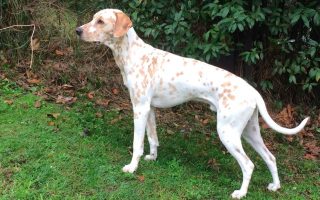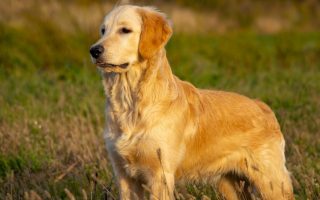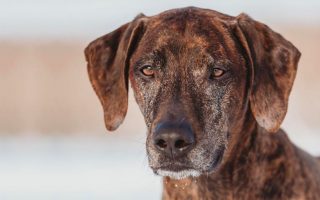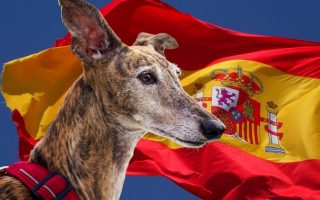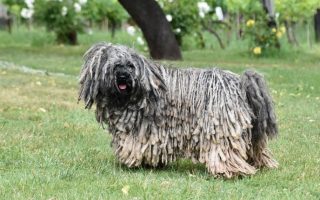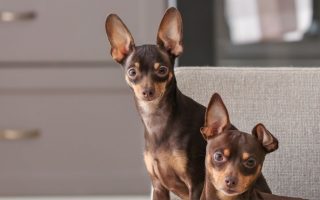As you may already know, there are several breeds of wolfy dogs that look like huskies but are not really huskies.
Many people are suckers for wolfdogs because of their physique and wildness that bring you right into the middle of nature.
However, taking care of these hybrids is tasking, to say the least. The wild nature makes it hard for them to be domesticated.
If you’re someone with this peculiar taste, you may consider going for tamer dogs.
A popular alternative is the Siberian Husky. They’ve got the wolfish look coupled with blue eyes like the Direwolves of Game of Thrones.
The Siberian Husky comes right out of the cold region of Siberia and is seen as exotic because of its unusual appearance.
They’ve got stamina and speed that makes them good hunting dogs. They are also fun to be around, which makes them cool pets.
However, the Siberian Husky isn’t the only dog with a wolfish look. If you prefer having options, then consider other wolfish dogs that look (and sometimes behave) like a Siberian Husky.
With them, you can satisfy the urge to own a wild-looking animal without them being wild. Sounds like a great deal, isn’t it?
In this article, we’ll take a look at the top 16 dogs that look like huskies but aren’t—and how you can distinguish them.
For clarity, when we use the word “Husky,” we’re typically referring to the Siberian Husky.
So, from this list of Husky lookalikes, you should be able to find a dog that fits your personality, lifestyle, and preference.
Please keep in mind that some of these dogs, including the Husky, are banned in some cities. Do your research to avoid breaking the law.
Top 16 Wolfish Dogs That Look Like Huskies
1. Alaskan Malamute
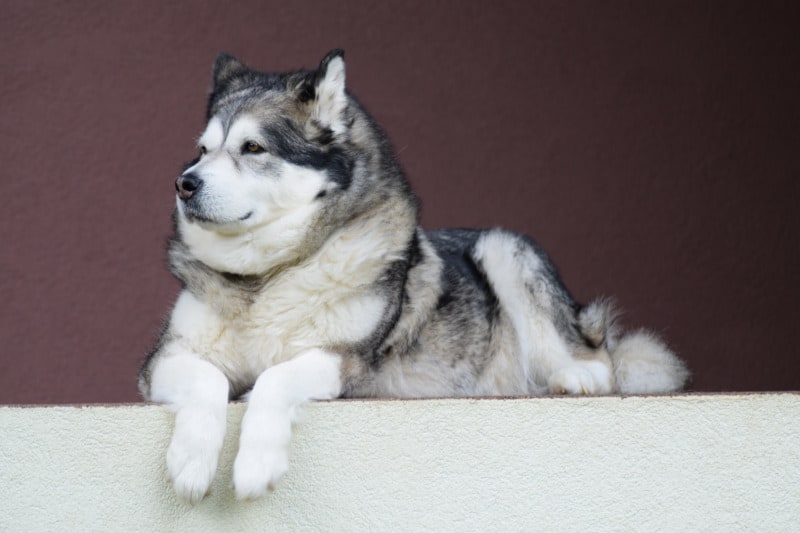
First on our list of dogs that look like huskies is the Alaskan Malamute. The Malamute looks so much like the Husky; it is easy to confuse both—but they are different. Their resemblance is linked to similar roots.
They both originated from the artic regions and played the roles of pulling a sled.
Furthermore, they share similar personalities. The Malamute and Husky are playful, loyal, and loving. Gentleness is a strong trait in the Malamute.
This doesn’t mean they do not have dominant qualities. The males are good leaders and need a human to show them who’s boss.
The first noticeable difference is in their size. The Malamute weighs more than the Husky. There are also distinctions in their physical features like the mark on their skin.
If you are adventurous, you will flow well with the Malamute. They are very active. However, without firm training, they become reckless even as puppies.
Plus, they need regular exercise for growth. Malamutes function best when they are outdoors with enough space than indoors.
Compared to other dogs, Malamutes are less likely to get noise complaints from neighbors. They are diggers, however, and there’s the occasional howl to look out for.
If you have smaller animal pets, do well to supervise them around Malamutes. Their hunting instinct may not be good for other little feet.
Malamutes can suffer from indigestion because of their eating pattern. Malamutes can live up to 16 years.
2. Alaskan Husky
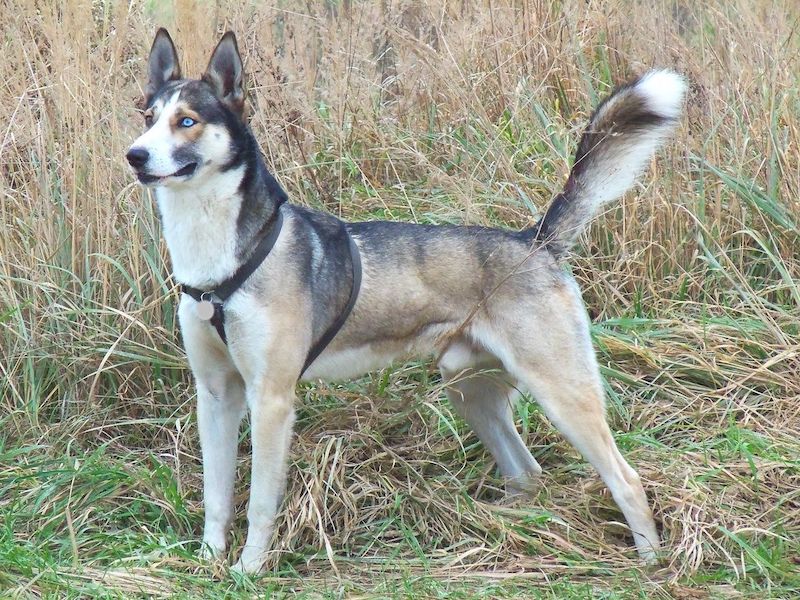
The Alaskan Husky originated from Alaska and has close ties with the Siberian Husky.
They have more strength than their Siberian cousins but owe their development to the latter.
The Alaskan Husky is medium-sized, going at a weight of 38 to 50 pounds. They were used for sledding and became favorites in sled races.
Sledding dogs have coats suitable for cold climates, and the Alaskan Husky does well in winter.
The Alaskan Husky display affection and friendliness towards everyone, including strangers. They are pack dogs, accustomed to being around other dogs.
They do not get antisocial and are sociable towards other animals. They do have a high prey drive, so be cautious about leaving them with cats and rodents.
Alaskan Huskies are healthy animals but can easily contact hip dysplasia along with diseases like cataracts, hypothyroidism, and progressive retinal atrophy.
This breed has the wolflike features of a Siberian Husky but is leaner. Alaskan Huskies also have brown eyes, unlike the Husky’s blue and brown ones.
Another point of contention is their size, and this is a fascinating one.
While the Alaskan Husky looks bigger than the Siberian Husky, the former weighs less. Both breeds are outgoing and friendly.
First-time dog owners are not encouraged to own an Alaskan Husky as they are stubborn and quite difficult to control. Only if you are experienced should you handle an Alaskan Husky.
You’d need to give them regular exercise, grooming, and a rich diet. If kept well, they live up to 15 years.
3. Tamaskan Dog
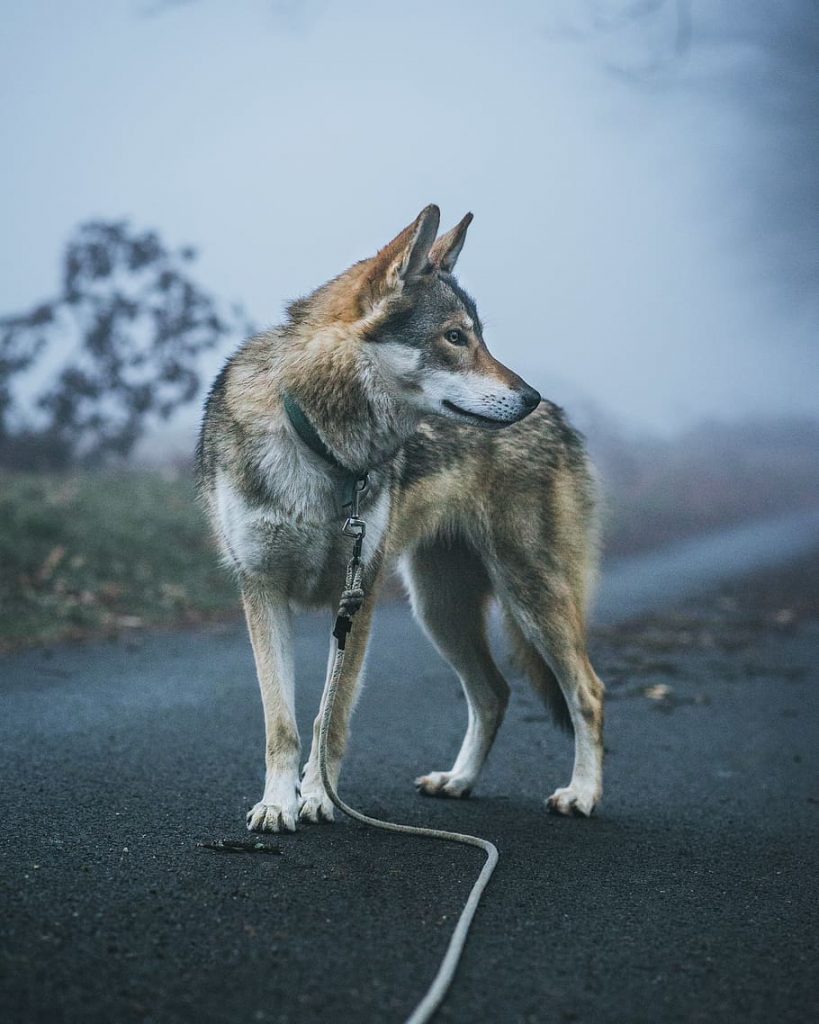
The Tamaskan is another breed that closely resembles the Husky and shares artic origins with our Siberian friend.
Three animals were crossbred for the Tamaskan to exist: the Alaskan Malamute, the Siberian Husky, and the German Shepherd.
The Tamaskan is intelligent, friendly with the family, and cooperative with other dogs. They also work well with animals.
They do not cope with extended isolation so if you want a Tamaskan, give them animal and human companions.
This breed is larger than the Husky, with a weight of 55 to 100 pounds. However, both have similar coats, bushy tails, and pointed ears. Also, both breeds are active and best left for the outdoors.
Tamaskans are healthy dogs and are fortified against certain diseases other breeds are vulnerable to. However, they can fall victim to some ailments like:
- Hip dysplasia
- Degenerative Myelopathy
- Cryptorchidism
Training a Tamaskan is challenging. This is because they are intelligent and maybe mischievous.
They get stubborn, too, during obedience training. So, there is a need for you to start early. Incorporate the reward system to earn their co-operation.
Tamaskans should be exercised at least once a day through activities like a walk, morning (or night) jogs, or a fun afternoon at the park.
Tamaskan’s life expectancy gets up to 16 years.
4. Alaskan Klee Kai
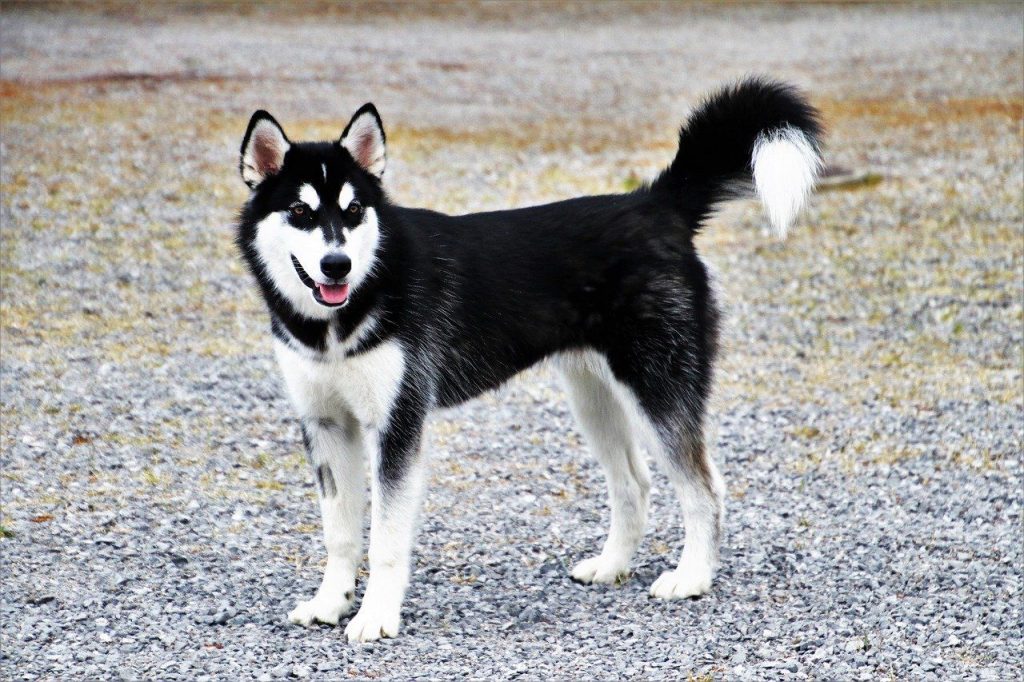
If you prefer smaller dogs, the Alaskan Klee Kai is here for you. They have the looks of a smaller Husky, which gives them a cuteness advantage. The word ‘Klee Kai,’ translated to English, means ‘small dog.’
The Klee Kai hails from Alaska and has a primary purpose different from the Husky. While the latter can be put to work in pulling sleds, the former is meant to be a companion.
They are known to be agile, curious, and intelligent. They may be small, but do not underestimate them. Sometimes, they come across as shy.
Do well to get them to warm up to you. Also, train them to be familiar with strangers, or they would stick to their wariness.
Remember that they are meant to be companions. When you’re not around, they can suffer from separation anxiety.
Their size notwithstanding, the Alaskan Klee Kai are good hunters. Do not keep them close to pets like cats and hamsters.
Also, be sure to supervise whatever interactions they have with kids. Your child should know how to treat a dog right. Any ill-treatment makes this breed react in a dangerous way.
The Klee Kai can stay indoors. However, don’t neglect exercising them by taking them outdoors on a walk. Do keep an eye on them, or you’d be surprised how fast they go when they sight prey.
Training them is easier than training a Husky. This doesn’t mean you don’t need experience.
What it does mean is they understand commands and execute them fast. Use food as motivation, and they’d do pretty much anything.
While the Klee Kai is considered a healthy animal, they are vulnerable to sicknesses like:
- Thyroid
- Heart diseases
- Cataract
An Alaskan Klee Kai can live up to 16 years.
5. Utonagan
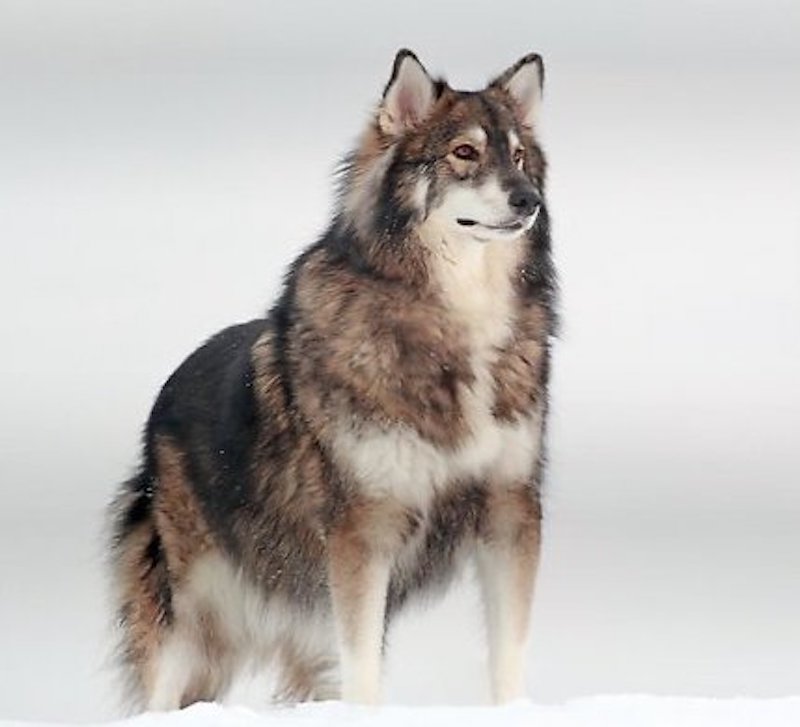
The Utonagan looks a lot like a wild wolf, which is good news for wolfdog enthusiasts. In fact, they were once known as Wolfdogs till subsequent name changes led to Utonagan.
Edwina Harrison was the originator of The Utonagan in the 1980s. The Utonagan emerged through a crossbreeding of the Siberian Husky, German Shepherd, Alaskan Malamute, and some others.
However, their wild appearance doesn’t disqualify them from being a family pet. Utonagans are good companions who are playful, agile, and loyal.
Unlike wolves who are lovers of raw meat, Utonagans require a balanced dog meal to remain healthy. Try not to overfeed them as Utonagans don’t handle obesity well.
Like the Akita, Husky, and others on this list, they may be challenging for new dog owners as training doesn’t come easy for them.
Be firm and assert your authority as they are often dominant and need to understand who’s in charge. However, with enough work, they learn fast.
It is best to stay outdoors as they are active and may wreak havoc if left indoors when training them. Utonagans need a lot of space. Think more farmland and less an apartment.
Some illnesses the Utonagan is vulnerable to are:
- Epilepsy
- Addison’s disease
- Hip dysplasia
The Utonagan can live up to 15 years.
6. Akita Inu
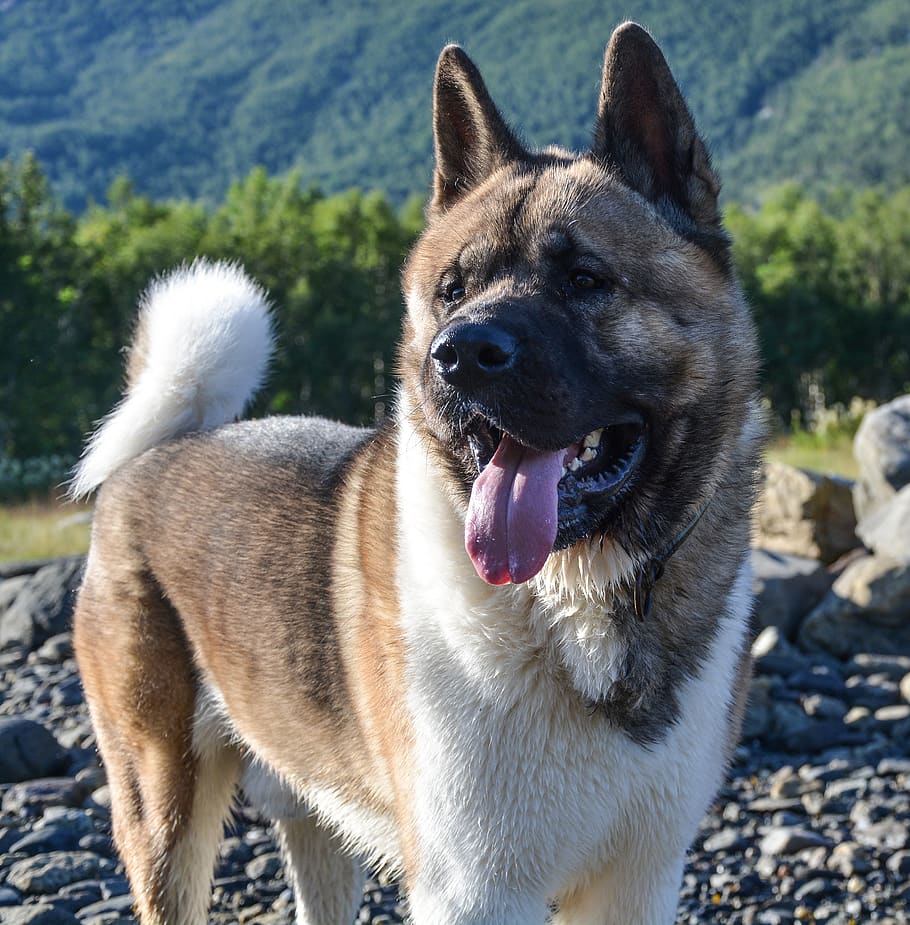
Also on our list of dogs that look like huskies but are not is the Akita Inu—a Japanese dog breed with an American variant called the Akita.
The Japanese and American Akita are different in weight and size. If you are not used to big dogs, the Akita may not be good for you as it weighs from 34 to 54 kg.
However, if size doesn’t matter, consider this handsome furry as a canine companion.
The Akita display affection and loyalty towards those they consider family. They are protective of their territory and do not cooperate with other dogs.
They do not easily show fear and can get aggressive towards other animals. Thus, do not leave them with children unsupervised. Ditto for smaller pets.
Akitas are healthy animals but can easily contact hip dysplasia and other diseases like the Pemphigus, patella, and knee problems.
This breed has the wolflike features of a Husky but is larger in size. It also has a curled tail, unlike the Husky’s bushy one.
Another point of contention is their personality. The Akita is cautious and makes a good watchdog, while the Husky is outgoing.
First-time dog owners are not encouraged to own an Akita because they are difficult to control. If you are experienced, and in need of a good watchdog, the Akita is your dog.
They can do well in an indoor setting but are best left outdoors. Daily walks are necessary to keep them in shape.
If kept well, Akita Inus can live up to 15 years.
7. Keeshond
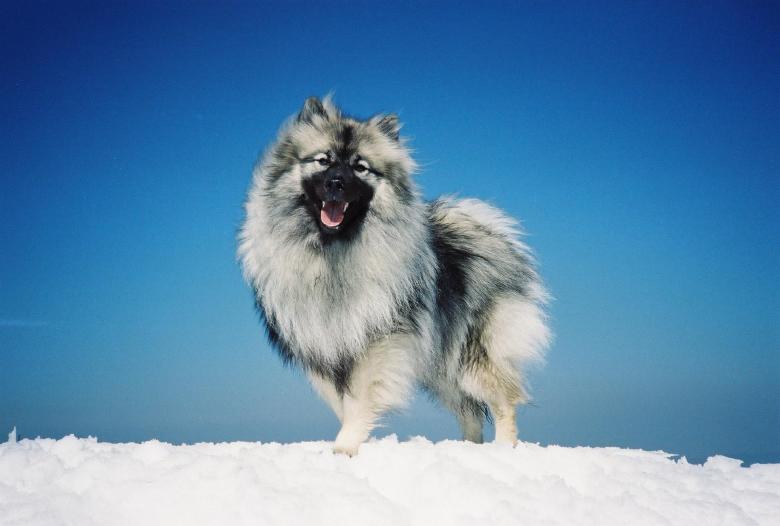
Here’s another stubborn breed you may wish to avoid if you have no experience in training dogs. They need expertise, firmness, and authority to handle. They are, however, not as stubborn as many other breeds.
The Keeshond has no innate hunting instinct. Nonetheless, they possess a high level of intelligence and grab good manners with ease.
They can be quite clever and cunning, so don’t be surprised if your Keeshond tries to outsmart you.
The Keeshond, like the Akita, can act as watchdogs but are not good guard dogs. They fit better as companions, however. They also share the joie de vivre of Huskies with their liveliness and joy.
If you have them around you, they are capable of putting you in a good mood. Expect to laugh as you watch them goof around.
One big difference between them and Huskies is that they adapt to the indoors. However, they are prone to barking and get antsy if left alone for long.
Keep these in mind to prevent a shredded apartment and complaints from neighbors.
Using food as a reward is a good tactic for Keeshonds. They also need sufficient exercise.
They are often not aggressive towards strangers but may show some shyness. It is up to you to make them confident.
Keeshond’s life expectancy goes up to 15 years.
8. Samoyed
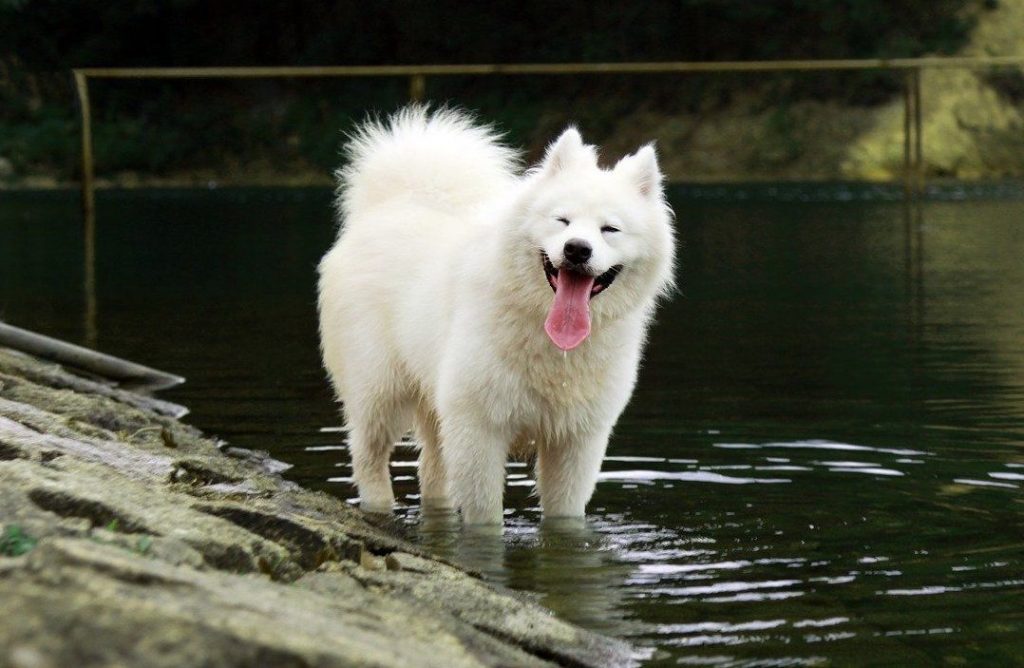
The Samoyed is a close relative of the Husky as both come from Siberia. Samoyeds are well known for their pure, white coat.
Unlike the Husky, their coat has no marking. Of course, such beautiful color requires regular grooming to maintain.
The Samoyed’s main good qualities are friendliness, gentleness, loyalty. These qualities they share with the Husky.
They are also strong-willed and stubborn, which means their owners should be firm with them, just like Huskies.
If you aren’t firm with the Samoyed, you may end up dealing with issues you did not bargain for.
The Samoyed is a team player and thrives with enough exercise like light jogs or a stroll around the neighborhood.
They don’t appreciate being left alone and may react in a negative way when that happens.
The Samoyed is best raised in a cool environment as they are not suited for a hotter climate. They can be indoor pets.
They are vulnerable to illnesses like:
- Diabetes
- Hip dysplasia
- Skin allergies
Samoyeds can live up to 15 years.
9. German Shepherd
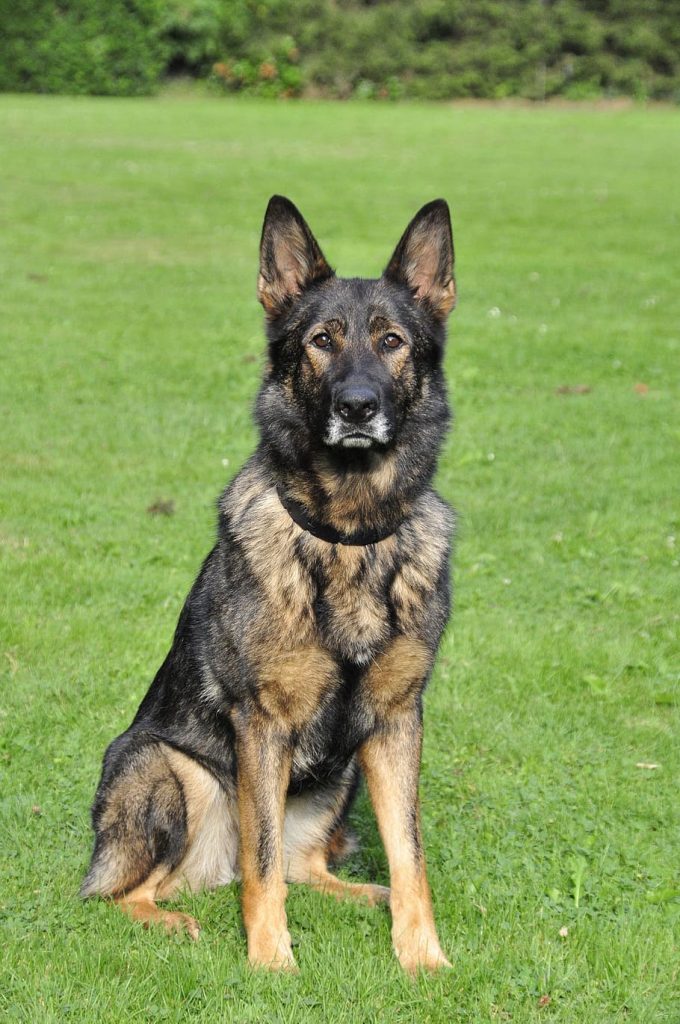
As the name implies, German Shepherds originated from Germany where they served as protectors of sheep.
They are among the dog breeds that look like huskies — though a darker version.
However, they come in other colors like white and brown. If you need a guard dog, a German Shepherd is a good option.
The German Shepherd is one of the most popular dogs in America, and it isn’t hard to see why.
They’re always ready to please their masters, exude confidence and courage, and are known to be hard workers.
The protective instinct of old remains in them in our modern age. They make good companions and can do anything to protect their owners.
This quality makes them fit to assist the police and the military. They have served and will continue to serve in both forces.
German Shepherds are dominant dogs. So, like their canine friends, they need firm masters.
If they get constant exercise and time outdoors, the German Shepherd can survive inside closed doors. Make time to get them outside to use their energy.
German Shepherds are vulnerable to:
- Epilepsy
- Vision impairment
- Degenerative myelopathy
German Shepherds can live up to ten years.
10. American Eskimo Dog
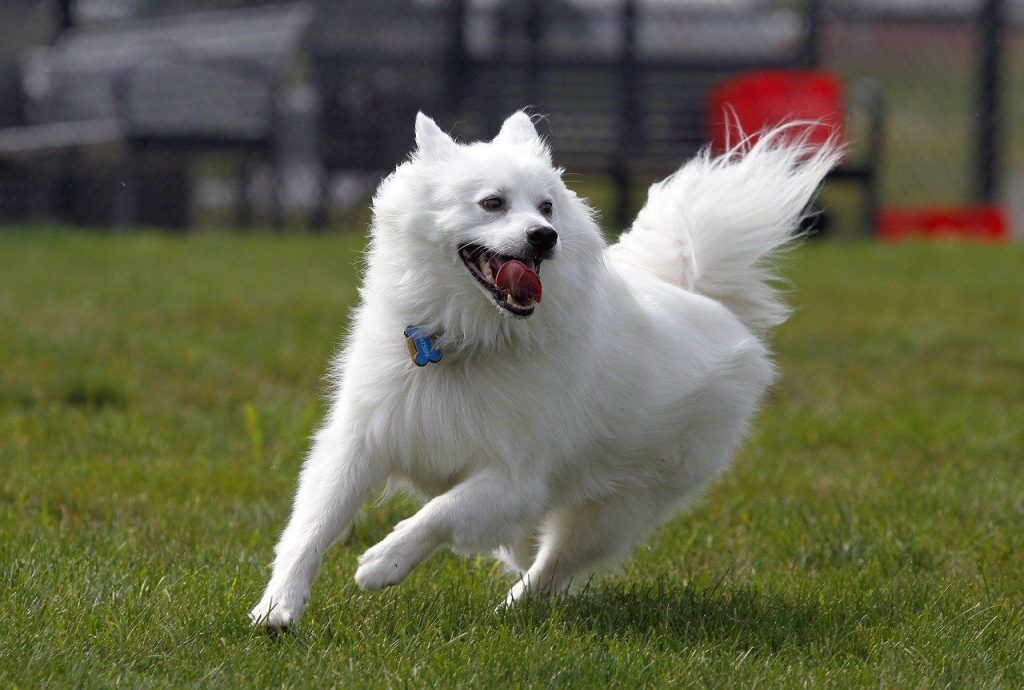
In this case, the name doesn’t imply roots, so don’t let it deceive you. The American Eskimo Dog has its roots in Germany and came to America, courtesy of immigrants.
The American Eskimo has a white coat like the Samoyed, herds sheep like the German Shepherd, and are easily trained. From being a circus attraction, they became popular pets.
They have qualities you can find in a Husky: intelligence, loyalty, energy, gentleness, and friendliness.
Their intelligence is so high; experts consider them one of the most smartest breeds there are.
They display signs of curiosity, a penchant for solving problems, and the ability to be autonomous. This intelligence was what gave them a spot in the circus.
Their smartness poses a significant challenge in training. So, you should start early by teaching them how to obey. Else, you may get a case of mutiny in your hands.
The barking ability and wariness at strangers make them good watchdogs. In addition, they have the tendency to chew anything.
To protect your valuable items, keep them away from the Eskimo and provide alternatives like toys.
Eskimos relate well with children and other pets and do not often get aggressive.
They are active when young and make suitable indoor pets as long you have time to take them out and get those paws moving.
As they get older, expect your Eskimo to become less active. He may turn your apartment into his retirement home.
Like their friends on this list, they do not like isolation and are prone to separation anxiety.
Eskimos are vulnerable to illnesses like:
- Hip dysplasia
- Cataracts
- Progressive Retinal Atrophy
The Eskimo can live up to 15 years.
11. Finnish Spitz
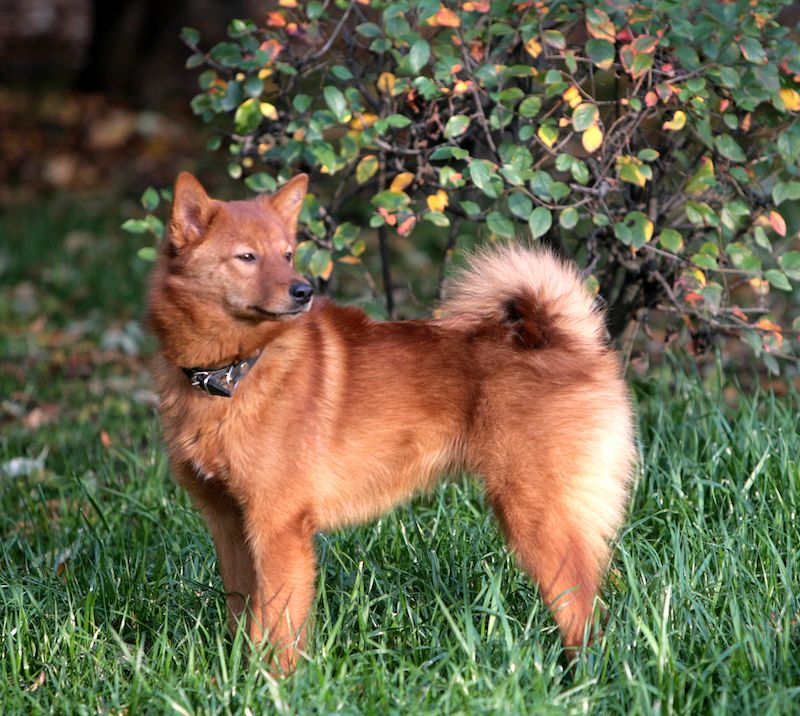
Finnish Spitz gives off foxy vibes. This marks the main difference between them and the Husky.
The Finnish Spitz came from Finland as the national animal and was bred to be hunters before becoming pets. Their hunting instinct leaves them wary of unfamiliar persons, so they can get aggressive to strangers.
They also see small animals as prey, so do not leave smaller pets close to them. If you have neighbors, know that Spitz barks a lot.
Nevertheless, they are playful and as silly as foxes. They do well around children and are very active.
Though playful and silly, they can be mischievous and stubborn too. As with other breeds, you should be firm with them.
Do well to keep them in a fenced yard to prevent them from chasing other animals and passers-by. You do not want a report of assault because of your dog.
Finnish Spitz is a late bloomer and matures later than other breeds. This means they have enough time to be playful, a quality that endears them to kids.
It also means they may show signs of rebellion at times.
The Finnish Spitz is vulnerable to illnesses like:
- Hip dysplasia
- Epilepsy
- Patellar Luxation
The Finnish Spitz can live up to 15 years.
12. Mackenzie River Husky
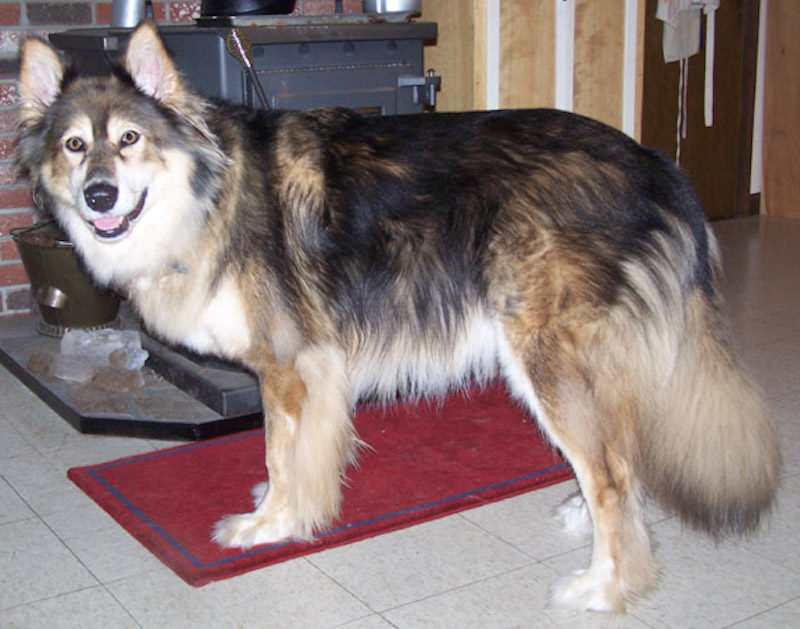
The Mackenzie River Husky is more of a type than a breed. The term refers to a group of sled dogs in the Artic arctic.
This confusion and lack of standards are reasons why any major kennel club doesn’t recognize the Mackenzie Husky.
Like other sled dogs, the Mackenzie River Husky flows with dogs because of their pack instincts. This makes them perfect for a multi-dog.
They are loyal, intelligent, and eager. Just like Siberian Huskies, they do not appreciate being left alone and can get destructive if isolated.
They are prone to separation anxiety, so do well to keep these dogs around people.
Despite their friendly nature, they sometimes display the same stubbornness as the Husky, the Akita, and others. Be firm when training them.
Mackenzie Huskies don’t do well indoors, so they may not be good for you if you live in an apartment. They require open space, like a garden, to stay in.
If you’re not used to regular exercise, don’t get a Mackenzie Husky. They should be exercised regularly. In addition to physical activities, put their minds to the test.
This breed may be vulnerable to illnesses like:
- Cataract
- Hip dysplasia
- Hypothyroidism
The Mackenzie River Husky can live up to 14 years.
13. Saarloos Wolfdog
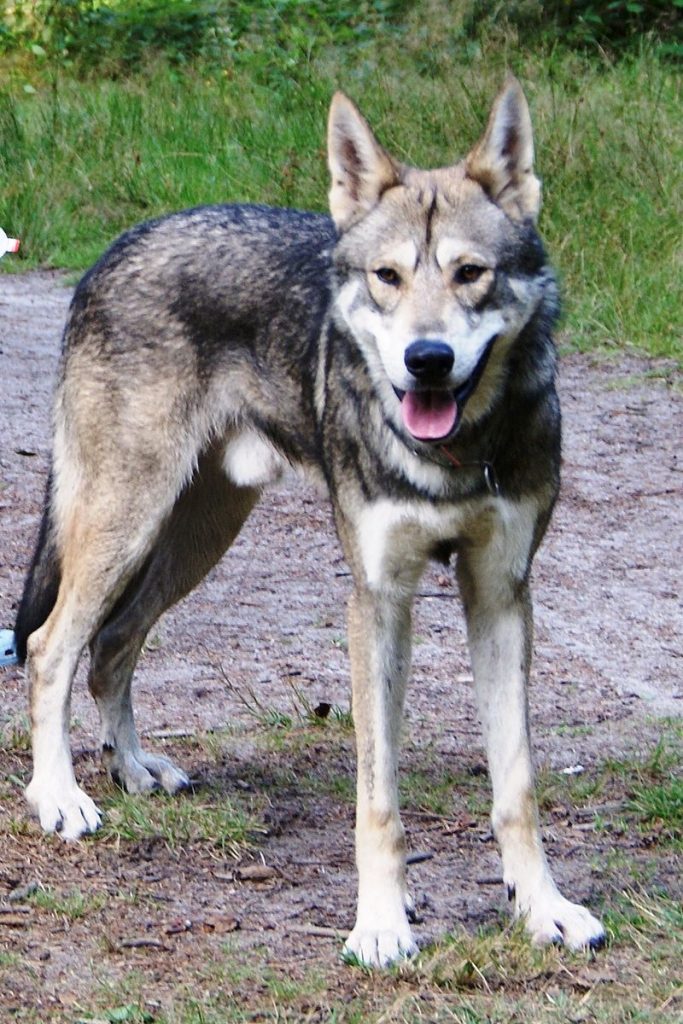
Okay, so our purpose was to identify Wolflike dogs that aren’t wolf hybrids. However, the Saarloos can be trained.
Saarloos got the name from the breeder, Leendert Saarloos. In 1992, he crossed a male German Shepherd and a European Wolfdog.
The result was the Saarloos Wolfdog. They were not made with any work function in mind.
Saarloos Wolfdogs are devoted and reliable, the hallmarks of good pets. However, their predator instincts remain intact. Keep them away from small children and little pets.
Like wolves that move in packs, Saarloos Wolfdogs don’t do well with isolation. They are prone to separation anxiety.
They are also wary around strangers, making them good watchdogs as they’d back at any hint of danger.
It is best to leave them in the outdoors as they are not good indoor pets.
For exercise, they should get like 30 minutes of activities, including jogging and running. They’ve got a lot of energy to use up. In addition, feed them well.
Their tendency to be dominant and size makes them act as leaders. They have to know you’re the leader, not them, or they’d prove stubborn.
You should be the alpha of the pack and train them with firmness. It is best to start early for better results.
Saarloos Wolfdogs are vulnerable to a lot of diseases. Some of them are:
- Pituitary Dwarfism
- Hip Dysplasia
- Spondylosis
Saarloos Wolfdog’s life expectancy goes up to 12 years.
14. Icelandic Sheepdog
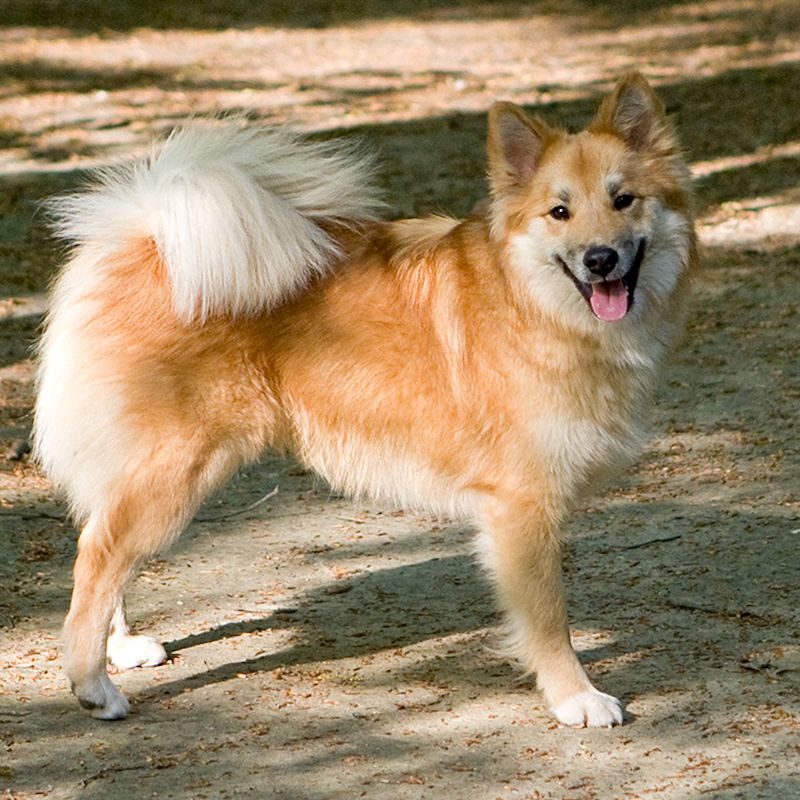
The Icelandic Sheepdog has roots in Iceland. With their erect ears and thick furs, they are among the dogs that resemble a Husky.
Icelandic Sheepdogs are as playful and as friendly as Huskies. They are not aggressive towards strangers but have a tendency to bark.
They are affectionate, crave companionship, and dislike isolation. They are good family pets but avoid them if you need a guard dog.
Active, outdoorsy people would have tons of fun with the Icelandic Sheepdogs. They are not good indoor pets. Give them open space, many exercises, and regular training.
They are independent thinkers and may challenge your authority from time to time.
As we’ve seen, even with other breeds, this is to be expected. With enough training, you can curb this tendency and make them obedient.
Icelandic Sheepdogs are vulnerable to illnesses like:
- Cryptorchidism
- Cataracts
- Hip dysplasia
The Icelandic Sheepdogs can live up to 14 years.
15. Swedish Vallhund
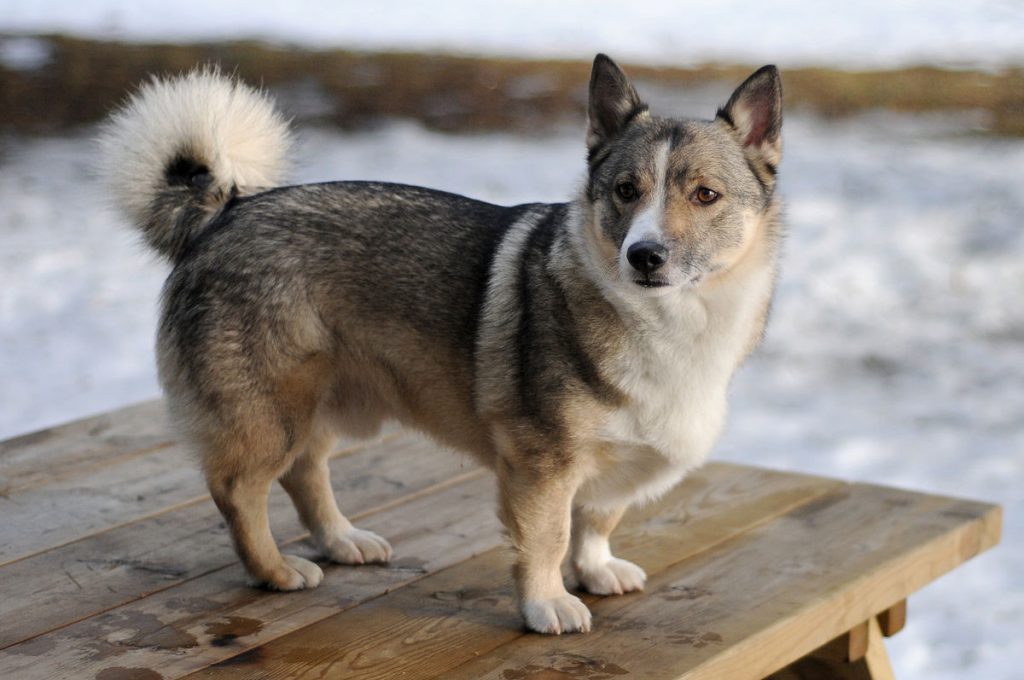
The Swedish Vallhund has its roots in farmlands in Sweden. The name “Vallhund” translates to “Shepherd.” You can guess their predominant role.
Vallhunds are barkers due to their natural protective instinct. They are super friendly, intelligent, active, alert, and playful.
If you’re not active, you may have difficulties being with Vallhunds. There is never a dull moment with them as they are creative and fun to be around.
Courage and independence are some other admirable qualities of Vallhunds. Of course, this means you have to assert your authority with them.
They adapt to different environments and are good at solving problems. Consider them if you need a watchdog.
Vallhunds are vulnerable to illnesses like:
- Retinopathy
- Hip Dysplasia
Vallhunds can live up to 15 years.
16. Czechoslovakian Wolfdog
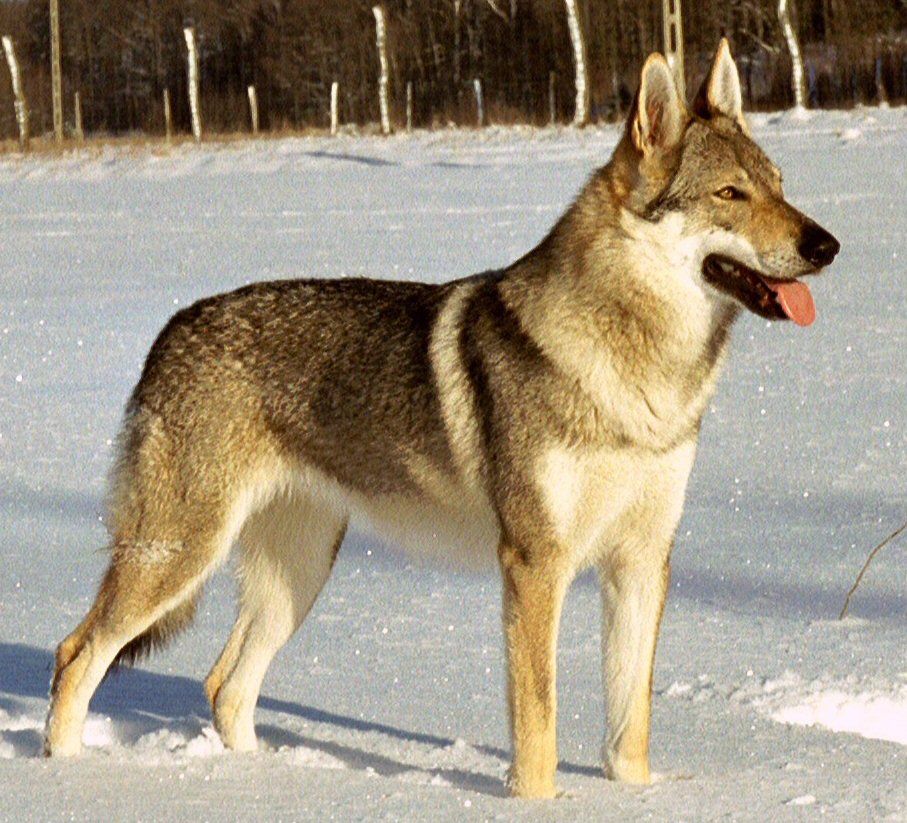
The Czechoslovakian Wolfdog is a rare breed with fine fur and beautiful amber eyes. It is another example of a trainable wolfdog, though not for everyone.
They mix well with family and get aggressive only when they sense danger. They are also active with strong stamina.
The Czechoslovakian Wolfdog came to be in Czechoslovakia in 1995 after the crossbreeding of a German Shepherd and a Wolf.
This breed needs firm training. You may want to avoid them if you have no experience. They are courageous and confident, traits that easily translate to stubbornness.
With enough outdoor activities in its schedule, the Czechoslovakian Wolfdog can do well indoors.
Exercises for them include walking and jogging. Keep them behind you during these exercises for them to know you are the leader.
The Czechoslovakian Wolfdog is vulnerable to illnesses like hip dysplasia. They’re considered a very healthy breed with a life expectancy of 15 years.
Wrap Up
Besides physical resemblance, the breeds on this list of dogs that look like huskies but are not share similar personalities, health issues and need to be trained with experience and firmness.
Their activeness and strength require that you be on the move.
Most of them do not make good first dogs.
However, if you’re a novice who’s interested in one of the aforementioned husky lookalikes, hire a professional to help you train them.
Other Interesting Articles:

